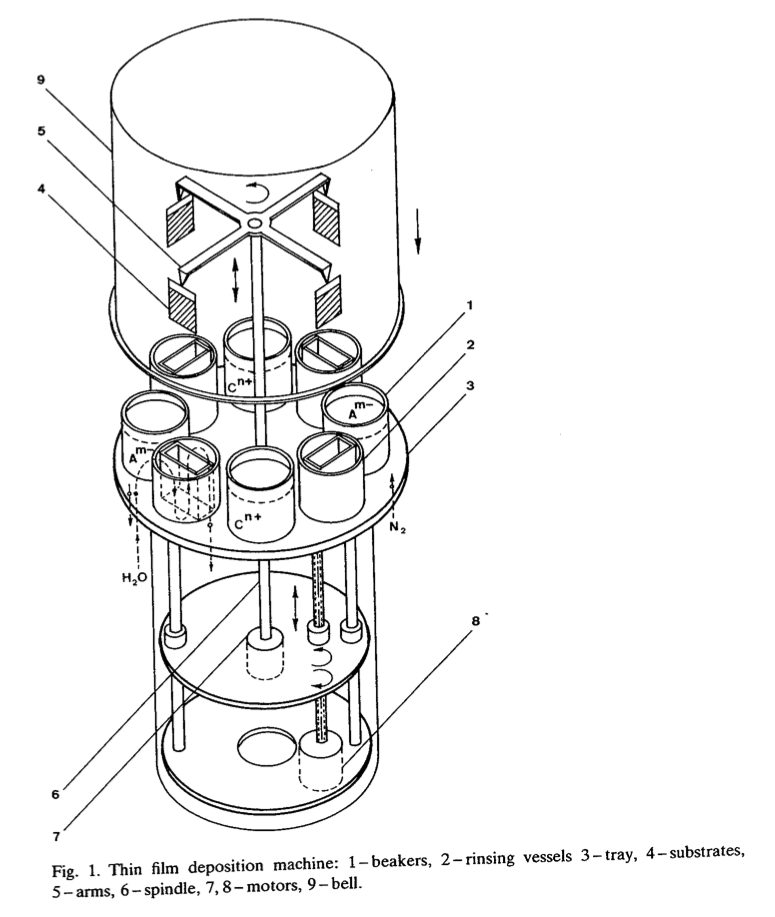Here is an interesting report on liquid ALD from NIST covered by Nanowerk News: "Remember that pair of gold electroplated
earrings you bought years ago at the mall? Key to crafting their allure
was the ability to place an ever-so-thin layer of valuable metal atop a
less costly base material. This same strategy will be central to
building the “engines” of future hydrogen-powered cars, and scientists
at the National Institute of Standards and Technology (NIST) have
developed a way to do it more effectively with metals rarer than gold ("Self-terminated electrodeposition of iridium electrocatalysts")."
Gray center section shows individual atomic layers of iridium NIST
scientists deposited, one layer at a time, atop a base of gold, with the
boundary between the two metals clarified by the green/red image at
right. A top view is shown at left in gold. The deposition technique,
which also works with other important metals, could produce economical
catalysts for hydrogen fuel cells and water electrolysis. (Picture and text from Nanowerk)
Self-terminated electrodeposition of iridium electrocatalysts
.
Energy Environ. Sci., 2015, Advance ArticleDOI: 10.1039/C5EE02541A
A simple electrochemical process for submonolayer deposition of
ultrathin catalytic Ir films is demonstrated. This method enables
effective utilization of one of nature's rarest elements while different
substrates facilitate the exploration of promising bimetallic catalysts
for a sustainable hydrogen economy. Semi-coherent Ir films were
deposited on Au, Pt and Ni substrates using K3IrCl6–Na2SO4–H2SO4 electrolytes operated between 40 °C and 70 °C. However, the deposition reaction is quenched at the onset of H2 production where adsorbed H blocks the reduction of IrCl6−xH2Oxx−3
to Ir. The electrode can be reactivated for further deposition by
pulsing the potential to more positive values where adsorbed H is
oxidized. The electrocatalytic activity of ultrathin Ir and Pt films,
and combinations thereof, were examined as function of the number of
self-terminating deposition pulses. The ultrathin films match or exceed
the best reported activity metrics for hydrogen oxidation in alkaline
media and oxygen evolution in acid.



%20(1).png)

